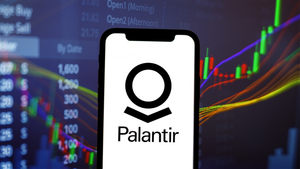 Sometimes, the stock market gives investors the opportunity to play in the corporate leagues, where deals are made not on the stock chart or tape but at the negotiating table when markets are closed and everyone goes home. Today, a potential buyout deal is being discussed by a private equity firm looking to eat up and potentially turn around one of America’s darlings in the retail sector, though one that has recently become a sort of “fallen angel,” so to speak.
Sometimes, the stock market gives investors the opportunity to play in the corporate leagues, where deals are made not on the stock chart or tape but at the negotiating table when markets are closed and everyone goes home. Today, a potential buyout deal is being discussed by a private equity firm looking to eat up and potentially turn around one of America’s darlings in the retail sector, though one that has recently become a sort of “fallen angel,” so to speak.
This deal is centered around shares of Walgreens Boots Alliance Inc. (NASDAQ: WBA), a company that has faced difficulties in recent quarters due to the decline of its business model as a brick-and-mortar shop, not adjusting to some of the online sales model or even on-site ancillary services such as its competitor CVS Health Co. (NYSE: CVS) had done as soon as headwinds started to come.
However, not all hope is lost in Walgreens as these private equity buyers do see some potential for it to unlock a higher valuation and thus drive up returns for whoever owns the stock or the company as a whole. Investors now get a chance to step behind the curtains of corporate dealings with Walgreens’ latest quarterly earnings report, one that might push the envelope for a double-digit percentage upside by the time the buyout bid is announced.
The Financial Clues Speak Louder
Most investors had been worried about Walgreens being thrown out of the equation, as news of store closures and collapsing earnings had hurt the stock over a few quarters in the past. However, as judged by the company's financials, there are now signs of a potential recovery in the short term.
These results are especially important today as these private equity firms review potential valuation scenarios for Walgreens as a company in order to make the appropriate offer for shareholders to approve then and potentially sell the company. That being said, here are some of the factors most important in the latest quarterly earnings results.
Net revenues at Walgreens rose by as much as 4.7% over the year, reaching $38.6 billion. This top-line number, let alone the growth rate, is not reported for a company that is supposedly dying in today’s market. With this in mind, other factors within the report might make these buyers lenient about sending a higher bid for Walgreens.
“Other income” is an item on the company’s income statement that drew some attention in this report, especially as it grew to a high of just under $1.5 billion for the quarter, a massive jump from last year’s $195 million reported. Of course, these benefits and growth rates led to a similar jump in the company's bottom-line earnings per share (EPS).
While Walgreens has no net earnings to speak of, the net loss of $6.85 per share recorded for the same quarter last year has been cut to less than half in this quarter’s reported net loss of $3.30 per share. Of course, this highly affects the potential projections and forecasts these buyers may make moving forward in their offers, and that’s where the upside potential comes from today.
The Market’s Take on Walgreens Stock
Seeing the recent results and how they may affect the future valuation or bid made by these firms caused a sudden shift in the stock’s underlying indicators. Investors can see this theme at play through the 27% collapse in short interest for Walgreens stock over the past month, a clear sign of bearish capitulation.
Now that the picture becomes clearer for investors, it shouldn’t be a surprise to see the $477 million of institutional buying come in over the past quarter for Walgreens stock, another bullish factor to lean on for the potential upside jump on a takeover bid being announced higher.
Walgreens recently announced it has agreed to be acquired by an entity affiliated with private equity firm Sycamore Partners for $11.45 per share. With this offer on the table, the question now turns to where the stock might trend in the coming months ahead of a potential formal bid. Based on the current chart patterns and previous analyst price targets, $12.50 per share appears reasonable in the near future.
While that still represents a discount to what some might expect in a final deal, especially considering the company trades at just 0.8x its book value, it suggests room for negotiation. A valuation closer to 1.0x P/B—paired with a $12.50 price—would offer more upside from current levels and could represent a more balanced deal for shareholders.
Where Should You Invest $1,000 Right Now?
Before you make your next trade, you'll want to hear this.
MarketBeat keeps track of Wall Street's top-rated and best performing research analysts and the stocks they recommend to their clients on a daily basis.
Our team has identified the five stocks that top analysts are quietly whispering to their clients to buy now before the broader market catches on... and none of the big name stocks were on the list.
They believe these five stocks are the five best companies for investors to buy now...




